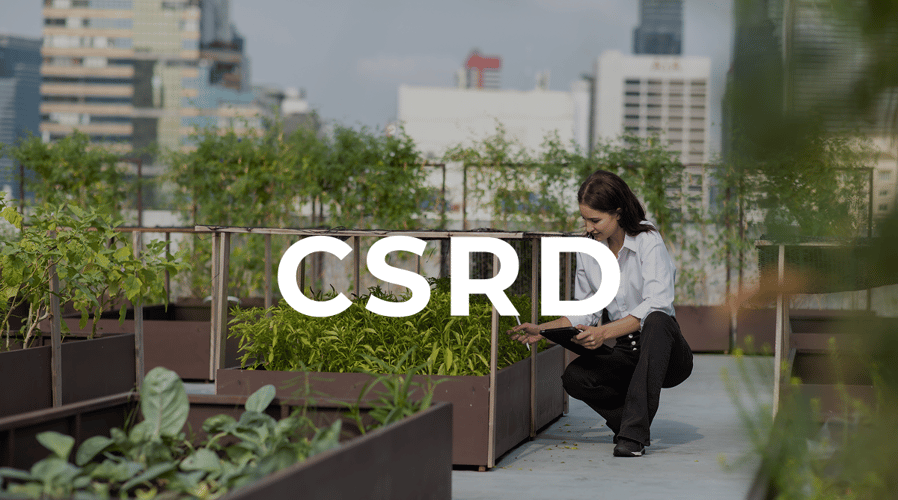

📌This article, written by Shubhra Dixit, ESG researcher, answers the most frequently asked questions about the VSME and guides you through what it is, who it applies to, and how it works.
What is the VSME?
The VSME (Voluntary Sustainability Reporting Standard for Micro, Small, and Medium Enterprises) is a standardized sustainability reporting framework developed by EFRAG (European Financial Reporting Advisory Group) at the request of the European Commission.
It helps companies disclose sustainability information and is developed in response to growing demands from banks, investors, and corporate partners. Use is voluntary and designed as an alternative or preparation for the mandatory CSRD reporting framework for larger listed entities.
Source: EFRAG VSME Standard (official document)
Who can use the VSME?
The standard applies to micro, small, and medium-sized companies (generally under 250 employees), specifically those not covered by the EU's CSRD. It streamlines the process for organizations wanting to demonstrate ESG commitment and prepare for future regulatory changes.
To use the VSME, companies should at least be able to provide basic information on their environmental, social, and governance practices; such as energy use, employee policies, and business ethics.
How is the VSME structured?
VSME consists of two modules: the basic module and the comprehensive module. As a company you can choose which module you want to use as your reporting system.
Basic Module: Eleven key ESG disclosures covering environment, social, and governance areas; this module sets the minimum disclosure requirements and is the prerequisite for the next step.

Comprehensive Module: Nine additional disclosures for companies seeking deeper engagement with stakeholders, banks, investors, or customers. The Basic Module must be completed before using the Comprehensive Module.

How many datapoints does the VSME have?
The VSME standard has approximately 50 data points in its Basic Module and about 100 data points if the Comprehensive Module is included. These data points cover essential ESG topics, with fewer requirements than CSRD and ESRS, making it much less complex for SMEs.
What is the difference between VSME and CSRD?
The main difference is that CSRD is a mandatory EU directive requiring large companies—and some listed SMEs—to conduct and audit comprehensive sustainability reporting using strict standards, while VSME is a voluntary, simplified reporting standard designed to help small and mid-sized companies share ESG data without complex regulatory burdens. VSME reporting is optional and focuses on flexibility and reduced complexity, whereas CSRD reporting is required by law and carries higher assurance and integration into financial reporting.

What is the difference between VSME and ESRS?
The main difference is that ESRS (European Sustainability Reporting Standards) are the specific, mandatory reporting standards that companies must use for sustainability disclosures under the CSRD, detailing exactly what and how to report across environmental, social, and governance topics. VSME, is a voluntary and simplified sustainability reporting standard for non-listed small and medium-sized enterprises, designed to make ESG reporting easier and less burdensome for smaller businesses not subject to full ESRS requirements.
How can the VSME be beneficial for my company?
For companies that are uncertain about the value of adopting the VSME, this standard offers a practical way to respond to increasing demands from investors, banks, and larger business partners for sustainability data, without the administrative complexity of full mandatory reporting.
Streamline ESG information requests: VSME can help streamline ESG information requests through a single harmonized framework, making it easier to participate in supply chains, support financing applications, and enhance competitiveness.
Prepares for future regulations: It also prepares businesses for future regulatory changes (such as the CSRD), helps identify and manage sustainability risks before they become critical, and fosters a transparent, trustworthy reputation with customers and stakeholders, making the company more attractive for business opportunities and partnership.
What is the application process for companies adopting VSME?
A structured approach helps companies efficiently adopt VSME reporting while maintaining data accuracy and stakeholder engagement. The application process for VSME typically involves the following steps:
- Scoping: Understand your company’s context and stakeholder expectations to select the appropriate VSME module (Basic or Comprehensive) and identify relevant ESG topics.
- Gap Assessment: Compare your existing data, policies, and reporting practices with VSME requirements to identify gaps and areas for improvement.
- Software Selection: Choose and implement specialized VSME reporting software to streamline ESG data collection, facilitate guided data entry, and automate report generation. Take a look on our VSME software page for a preview.
- Implementation: Develop and operationalize processes for ESG data collection, policy development, and internal governance, supported by the reporting software.
- Reporting: Compile and publish your sustainability report in accordance with VSME guidelines, ensuring the report is accessible to stakeholders and aligns with their expectations.
How often should SMEs update their VSME reports?
While the standard does not legally mandate report frequency, annual updates are the standard and also recommended to reflect progress, maintain transparency, and respond dynamically to stakeholder and regulatory expectations.
Where can I find more documentation and support?
- Official EFRAG VSME Standard (Full standard): [EFRAG website]
- European Commission recommendations and FAQs: [European Commission]
- A guide on how to implement VSME with a digital solution: [VSME – a practical approach by Master Sustainability]



